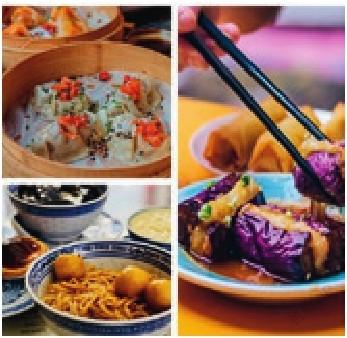Chez Guangdong
By Elsbeth van Paridon

Ever the food-oriented society, Chinese compliments of yore include such gems like “youve fattened up,” indicating youve been eating a lot, indicating lifes been treating you pretty well. In 2021, the aforementioned pretty much denotes youve been stuffing your face; gracing any modern (fe)male with these words, usually ends in a crash diet—or two. Having said that, not even the highest-flying resident of China will let these words come between them. And their Cantonese nibbles. Sharpen your knives because here are the parts unknown of Chez Guangdong.
The great chef and food storyteller Anthony Bourdain once spoke the winged words: “Travel changes you. As you move through this life and this world you change things slightly, you leave marks behind, however small. And in return, life—and travel—leaves marks on you. Most of the time, those marks—on your body or on your heart—are beautiful. Often, though, they hurt.” Those left by the BBQ pork buns or honey garlic spareribs, eggplant in garlic sauce, beef with oyster sauce and, of course, the illustrious practice that is dim sum-ing, burst with guilty pleasure.
Guangdong, or Cantonese cuisine, is matchless among Chinese cuisines. Its raw materials, cooking methods, and flavorings all differ from the other styles found across the vast land. Located in south China, the province of Guangdong is bordered by mountain ranges to the north and the South China Sea to the south.
The cuisine divides into three aromatic areas: Guangdong food is traditional Guangdong cuisine; Chaozhou food is similar to Fujian cooking because Chaozhou neighbors Fujian Province. The latter stresses seafood and many dishes are served in soup, with thick syrupy, scrumptious, and sweet senses. Fish sauce, hot sauce and red vinegar are the countertop must-haves for this one. Dongjiang food, epitomized by Huizhou food, stresses poultry and serves up dishes that veer slightly to the saltier side of things, drizzled in simple sauces.
Another staple in the Cantonese caboose is seafood, paired with a pantry displaying unique and mixed flavorings as the cuisine also puts on its plate a significant spoon of foreign cooking cultures. For example, one flavoring liquid is a mixture prepared from onion, garlic, sugar, salt, and spices. Gravy, then, is prepared from a mixture of peanut oil, ginger, onion, Shaoxing rice wine, crystallized sugar, anise, licorice root, clove, ginger powder, and dried tangerine peel. Spiced salt, in turn, is prepared from refined salt, sugar, powdered spices, and anise. These flavorings, along with other beloved condiments such as oyster sauce, clam oil, and curry, lend the Guangdong fare its unique taste.

